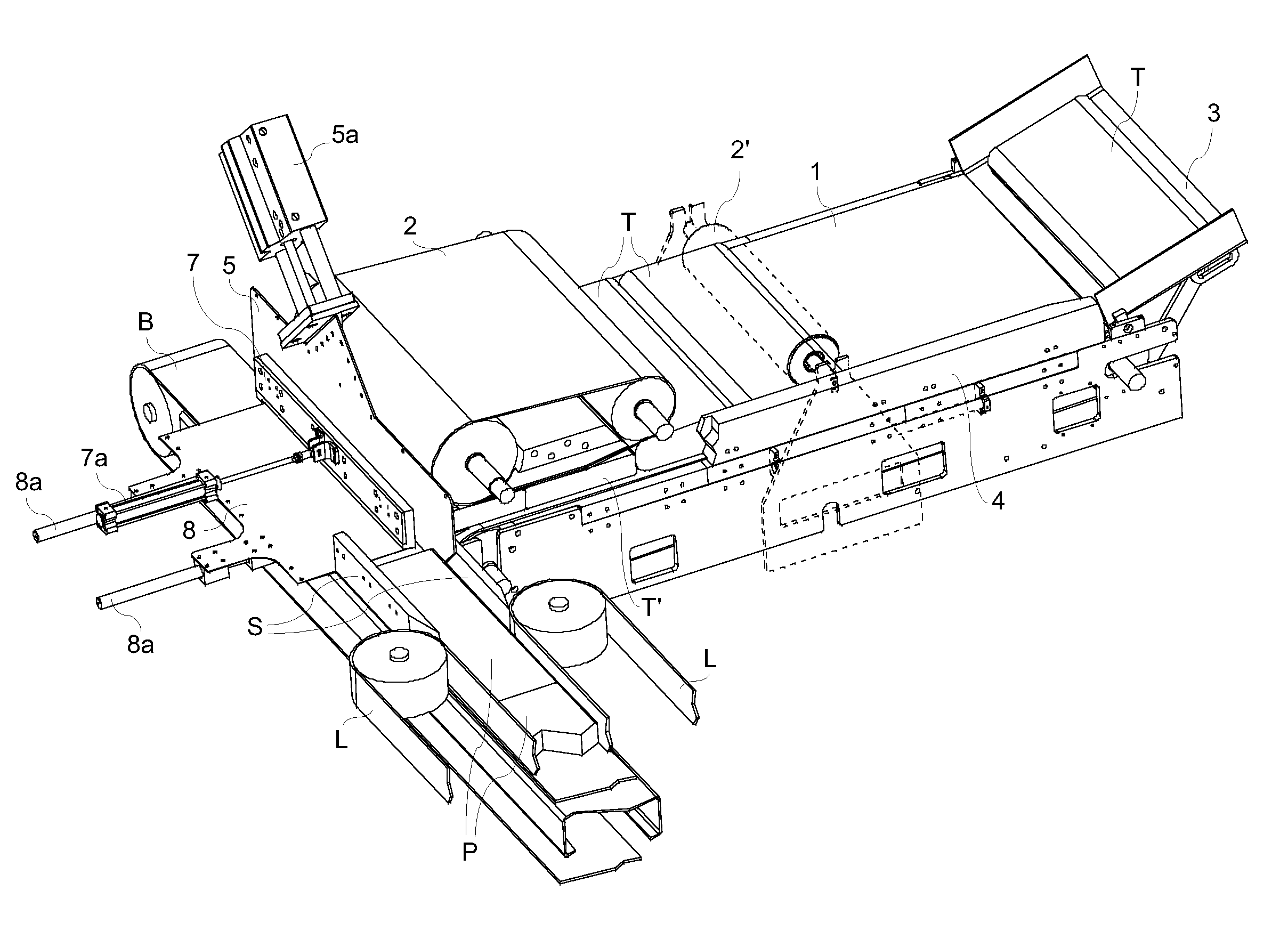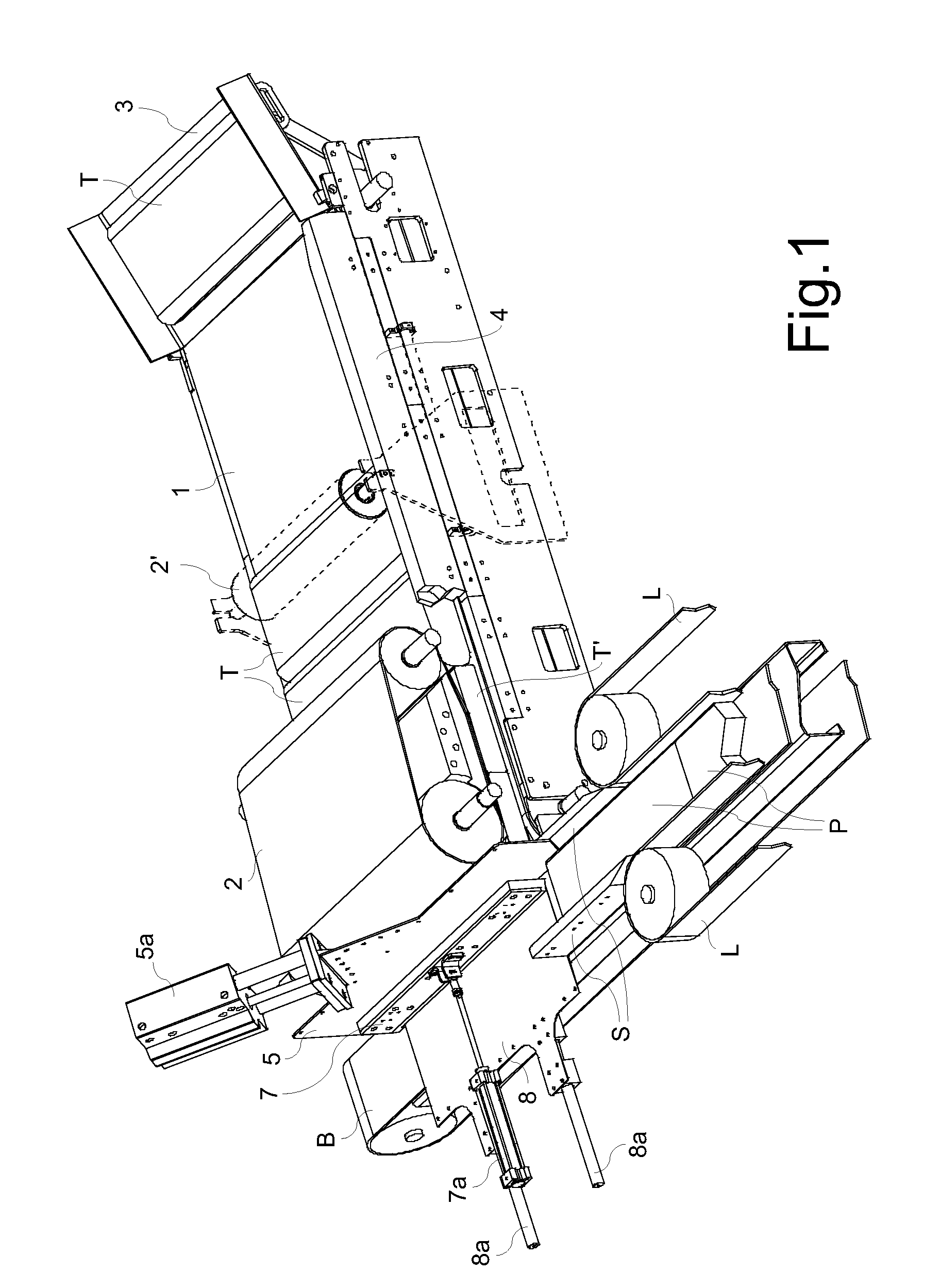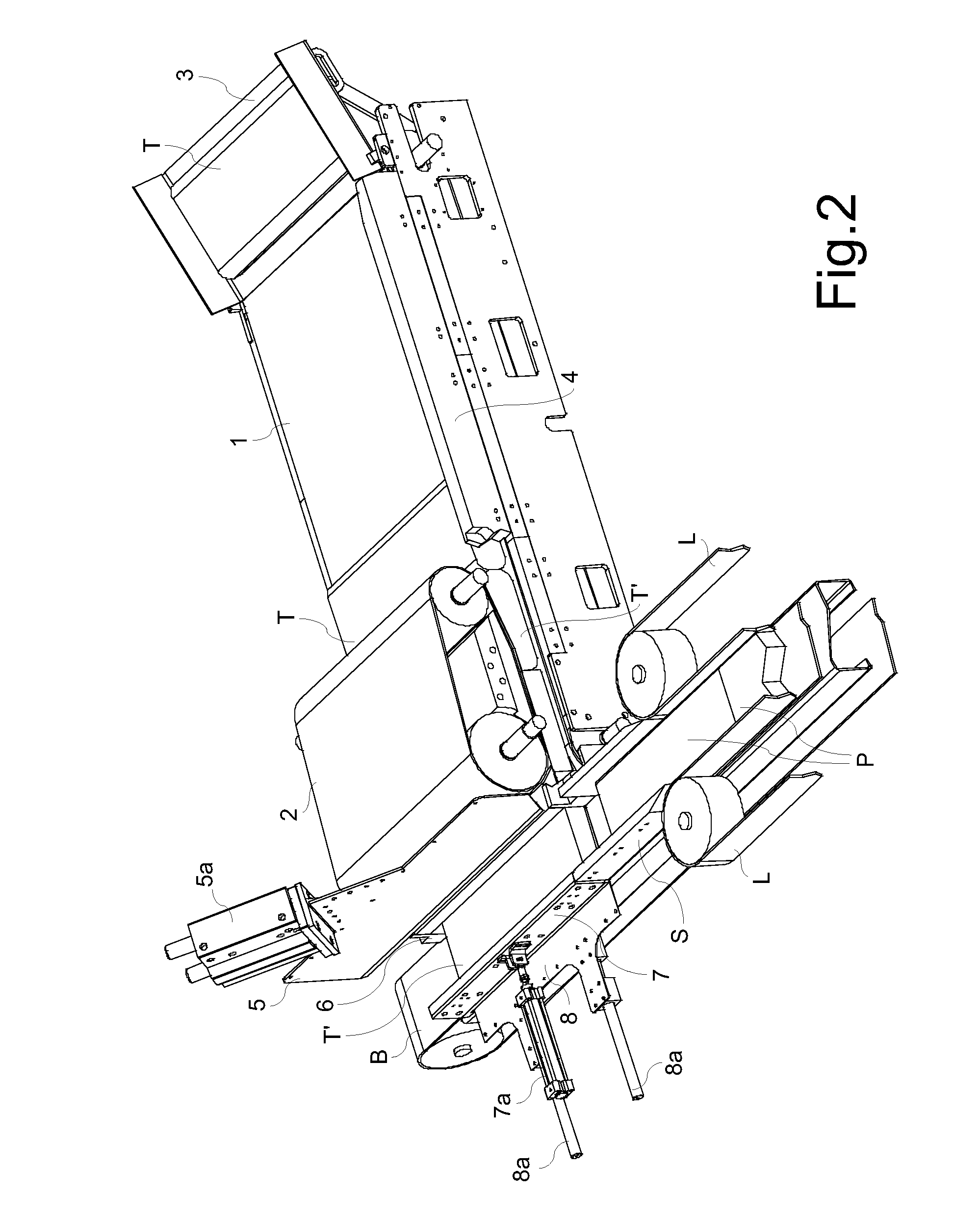Feeder for machine for canning tuna and the like and related operating cycle
a feeding machine and canning tuna technology, applied in the field of canning tuna machines, can solve the problems of affecting the accuracy of determining, difficult to overcome difficulties, and excessive costs, and achieve the effects of reducing waste in the canning machine, and reducing the waste of canning machines
- Summary
- Abstract
- Description
- Claims
- Application Information
AI Technical Summary
Benefits of technology
Problems solved by technology
Method used
Image
Examples
Embodiment Construction
With reference to FIGS. 1 and 2, there is seen that a feeder according to an embodiment of the present disclosure includes a feeding device formed by a bottom conveyor belt 1 and a shorter top conveyor belt 2, overlapping the former and aligned therewith at the forward outlet end. The tuna loins T, which the operator has simply removed from their package, are placed on belt 1 by means of a chute 3, arranged at the rear end thereof, to be fed towards the top belt 2 along a path defined by a containment wall 4 whose forward portion has been removed for the sake of clarity.
The operating distance between the two belts 1, 2 is adjustable through a suitable device so as to define a required distance corresponding to the final thickness of the tuna pat that is meant to be obtained; to this purpose, reference T′ indicates a tuna loin that has been reduced to the desired thickness. Furthermore, the possibility of adjusting the inclination of the top belt 2 is provided, so as to change the an...
PUM
 Login to View More
Login to View More Abstract
Description
Claims
Application Information
 Login to View More
Login to View More - R&D
- Intellectual Property
- Life Sciences
- Materials
- Tech Scout
- Unparalleled Data Quality
- Higher Quality Content
- 60% Fewer Hallucinations
Browse by: Latest US Patents, China's latest patents, Technical Efficacy Thesaurus, Application Domain, Technology Topic, Popular Technical Reports.
© 2025 PatSnap. All rights reserved.Legal|Privacy policy|Modern Slavery Act Transparency Statement|Sitemap|About US| Contact US: help@patsnap.com



